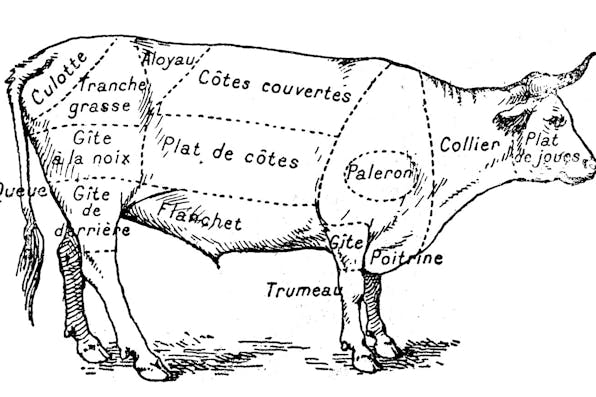
April 26, 2023
The Marcionite Offensive
European hypocrisy on animal rights and ritual slaughter comes straight from an ancient Christian heresy.
Eric Mechoulan’s essay on Europe’s intolerance for Jewish ritual slaughter combines thorough research and documentation—no pertinent angle has been forgotten—with lucid exposition and a deep understanding of the cultural, social, and political implications. Such an examination has been sorely missing until now; Jewish leaders, not just in Europe but elsewhere as well, including Israel and America, should read it and meditate on it without delay. Non-Jewish leaders, opinion-makers, and government officials would also benefit from it.
The main lesson to be drawn from Mechoulan’s report is that the European debate on kashrut has very little to do with hygiene, animal welfare, or the global economics and ecology of food—as is usually assumed—and a lot to do with anti-Semitism. The author is right to describe graphically and to the last detail the various methods used in Europe allegedly to “alleviate” animal suffering. When people talk about “stunning,” they usually have in mind something akin to anesthesia. I remember how shocked a panel of journalists and government advisors was in France, some twenty years ago, when they were exposed to the real thing for the first time in a video. Mechanical and electric “stunning” are not just more technically barbarous than shechita: they are redundantly barbarous, since they add a form of pre-slaughter or post-slaughter torture to slaughter itself. Likewise, it is indeed useful to mention, as Mechoulan does, the many breaches of animal welfare that are routinely accepted in Europe for economic or “cultural” reasons, from industrial fishing and the slaughter of cetaceans, as practiced by the kosher-intolerant Norwegians, to hunting and bullfighting.
Some of the European countries that have outlawed shechita are just perpetuating or reinstating 19th- or early 20th-century bans that were enacted in order to keep Jews out or to turn them into second-class citizens. Evidently, another, much larger and much more demographically dynamic non-Christian religion, Islam, with slaughter requirements of its own, is now being targeted along with Judaism. However, the old bans were not removed in the interval between the public rejection of anti-Semitism after 1945 and the dramatic growth of Muslim communities at the end of the 20th century and the beginning of the 21st; in some cases, they were actually strengthened. Even more significantly, the various groups that campaign against ritual slaughter cannot entirely ignore the fact that Islam is less stringent and more amenable to compromise in these matters than Judaism—so much so that whereas a complete ban on “non-stunned” meat would be catastrophic for Jews, it would hardly affect the rise of Islam.
Responses to April ’s Essay

April 2023
Why Europeans Find Blaming the Jews Easier than Giving Up Meat
By Anael Malet
April 2023
Are Europe’s Restrictions on Jewish and Muslim Ritual Due to Christianity’s Influence or Absence?
By Matthew Schmitz
April 2023
The Marcionite Offensive
By Michel Gurfinkiel
April 2023
Who’s Afraid of Ritual Slaughter?
By Eric Mechoulan